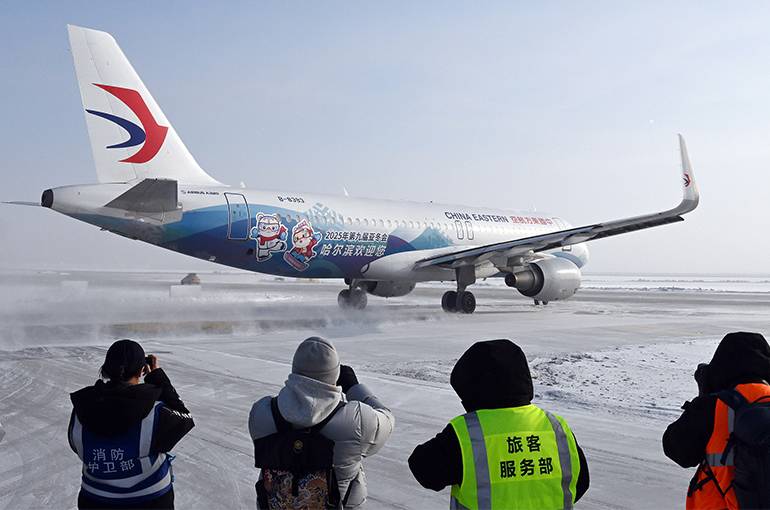 China Opens Three New Airport Runways Amid Concerns Over Slowing Demand
China Opens Three New Airport Runways Amid Concerns Over Slowing Demand(Yicai) Jan. 24 -- China's rapid airport expansion, as seen in the simultaneous opening of new runways at three major hubs yesterday, is going on amid concerns that slowing growth in aviation demand could increase competition and dent airport operators’ profits.
Harbin International Airport’s second runway opened on Jan. 24, as did the third at Wuhan Tianhe International Airport and the fourth at Guangzhou Baiyun International Airport.
And more than 10 other airports are expanding or planning to do so this year, costing several hundred billions of Chinese yuan. For instance, Guangzhou Baiyun is building a fifth runway, which will make it the world's largest airport and able to handle 140 million passengers and six million tons of cargo and mail a year.
But the speed of expansion is outpacing demand in the country. Air passenger traffic and aircraft buying by carriers have both slowed to the single digits since 2019 after years of double-digit growth, and it is proving hard to get back to the levels seen before the Covid-19 pandemic.
During the pandemic, new plane purchases grew at an annual rate of just 2.1 percent, far below pre-pandemic levels, an industry source told Yicai, adding that the rate is expected to remain below 3 percent for last year and this year, with airlines also retiring older jets at a faster pace.
As the introduction of new planes slows, airports that expand will face tougher competition for routes and traffic. Industry insiders said take-off and landing slots, a scarce aviation resource, will not necessarily increase in tandem with expansion, further crimping the ability of airports to grow flight numbers.
The financial expense brought about by expansion can also put greater pressure on airport operators’ earnings. For example, Sichuan Province Airport Group invested CNY56.2 billion (USD7.7 billion) to build Chengdu's second international airport, resulting in a total loss of nearly CNY10 billion over the past five years.
As the high-speed growth period has ended, airports should adjust their expansion plans to match the pace of the industry, the insiders pointed out.
Editors: Dou Shicong, Futura Costaglione